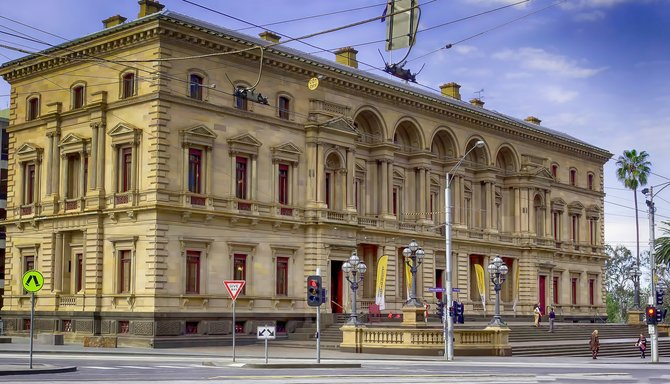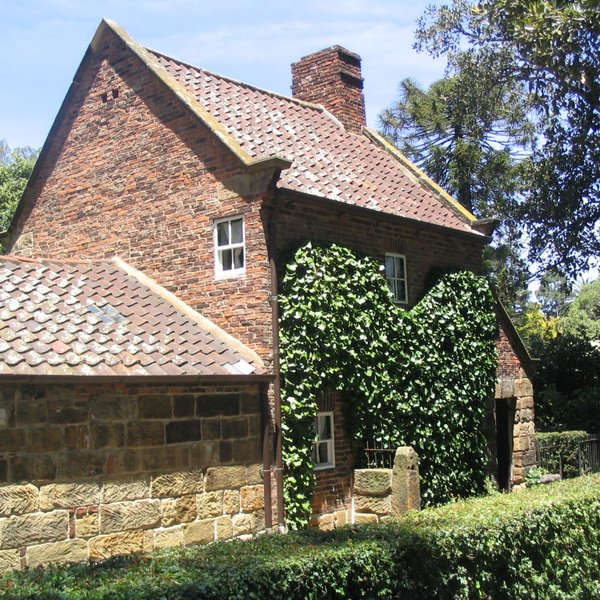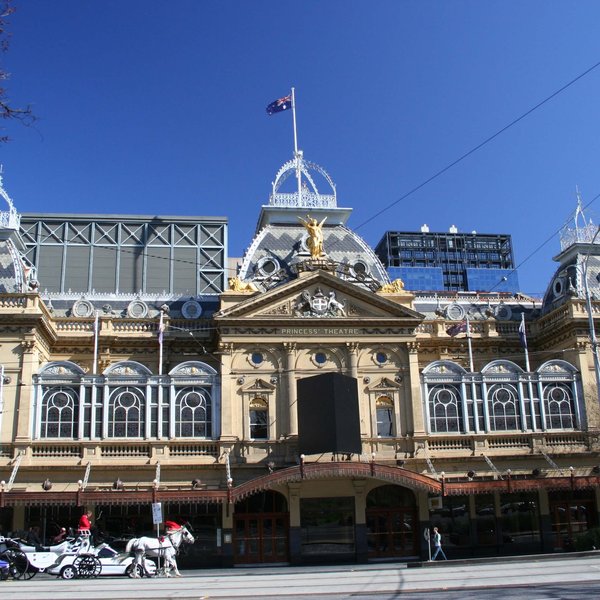Built between 1858 and 1862, Old Treasury Building in Melbourne takes pride of place among the city’s most prized examples of 19th century architecture. It was designed by John James (JJ) Clark, just 19 years old at the time, and was constructed with Bacchus Marsh sandstone.
A product and symbol of the Gold Rush, the Old Treasury Building is home to plenty of modern Melbourne history. Today, it houses the Old Treasury Building Museum and is still a meeting place for some senior Victorian politicians.
History of The Old Treasury Building
On any given day, visitors to or passersby of the Old Treasury Building can be seen staring up at the opulent walls and grandiose façade of Melbourne’s most elaborate public building. The beauty of the place has a vice-like grip on residents and visitors alike - and for good reason.
Read on to find out the fascinating history of the Old Treasury Building…
The Original Old Treasury Building: Gold Glorious Gold
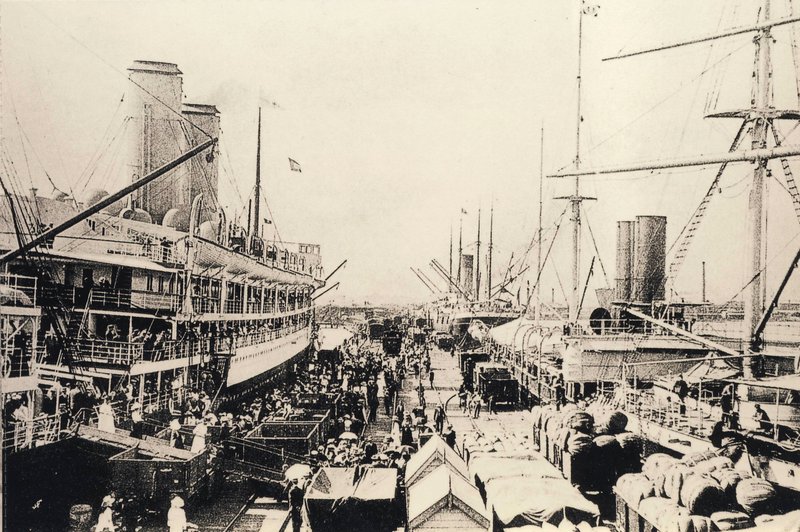
In 1851, a discovery was made that would change everything: two men, digging in the ironically-named Poverty Point in Ballarat, Victoria, struck gold for the first time. Almost overnight, dollar signs (or more accurately, pound signs) lit up the eyes and imaginations of people all over the world.
As a result, Victoria, still a relatively small and new colony at that time, grew exponentially. By the end of 1852, 90,000 people had arrived in the state to seek better fortunes. The same year, the workers inside Melbourne’s original Gold Office and Treasury on Williams Street witnessed the arrival of the first gold escort.
According to an eyewitness in the The Argus newspaper, three drays, each containing two boxes of gold, drawn by six horses, pulled up outside the original Old Treasury and Gold Office. Six men to each box carried the precious material inside, and by the following day, most of the office’s staff had resigned their positions to join the miners out in the fields of Ballarat.
A New Old Treasury Building is Commissioned

The arrival of gold in the state had even bigger implications for Melbourne than just its office staff resigning, however.
In 1852, the colonial city of Melbourne had only just celebrated its 18th birthday. As marvellous as the prospect of finding gold was, the Victorian Government had to act quickly to accommodate the rapidly expanding population and influx of wealth into the city.
Six years later, it was quickly made clear that the original Gold Office and Treasury wasn’t fit for purpose. The building on William Street was too small, too plain and perhaps most importantly, too unsafe to house something as valuable as gold. With the new found wealth the precious mineral had brought in, it was decided that no expense would be spared in its safekeeping.
Architects from all over the country scrambled to take the job of designing what was shortly to become Melbourne’s largest and most prized building, but there could only be one winner. One of those jostling for the role was a 19-year-old man named James John (JJ) Clark, the son and brother of two Gold Rush miners. Clark had just returned to Australia after a tour of Europe, his head buzzing with the grandiose designs of Italy. Perhaps that’s what won him the job - or perhaps Clark understood what his competitors did not: this was Australia’s chance to show Europe they were just as, if not more, capable of incredible architectural design.
Constructing The Old Treasury Building

Shortly after JJ Clark was appointed architect in 1858, building commenced. Just one year into its construction, The Argus newspaper was proudly reporting to Melburnians that work on the Treasury Building (it was not, after all, ‘Old’ yet!) was thoroughly underway and what the finished product would look like:
“The new Treasury will contain a gold office, the audit office, a residence for the treasurer, the usual provision for clerks’ offices, and a range of stables, concealed by terraces - in all 100 rooms…The average thickness of the walls will be 2 feet 6 inches. The basement story is constructed of bluestone and it is entirely fireproof…The total cost of the structure is estimated at £75,000.” – The Argus, Melbourne, 30th March 1859
The details about the thickness of the walls and building materials is significant. By the standards of the time, the Treasury Building was considered incredibly modern - despite its classic design. The fact it was fireproof was a big bonus, but the use of bluestone (or Bacchus Marsh freestone to be precise) as its main material was considered very risky - and for good reason.
However, these concerns would not immediately become apparent. By 1862, when most of the Old Treasury Building had been completed, other, more pressing issues had come to light. The previously estimated cost of £75,000 had risen to £87,000 - and the building was not yet finished, with the remaining cost estimated to be around £5,000. The nearly-finished building boasted 66 rooms in total, although the terraces, guard rooms and various out-buildings were yet to be complete.
By the time most of the departments had moved into the Treasury Building on the 10th June 1862, they accessed the building via temporary wooden stairs leading up to the and the forecourt with stone steps was not finished until 1868.
The Old Treasury Building Needs Improvements
By the early 20th century, the Old Treasury Building had become a staple monument in Melbourne’s skyline. Instantly recognisable by its grandeur and size, it became a firm favourite both nationally and abroad for its impeccable design.
But all that glitters is not gold. By 1930, at the outset of the Great Depression, the Old Treasury Building was literally falling apart. The Bacchus Marsh stone that Clark had so steadfastly championed was vulnerable to disintegration, and Melburnians walking beneath it had to watch out for falling pieces of heavy, dangerous rock.
In 1931, repairs on the building began. At a time when the population was experiencing economic trouble, the Government was careful not to splash too much cash on the project in spite of the dangers. £6,500 was allocated to renovating the front of the building, replacing the Bacchus Marsh freestone with the sturdier material of Stawell freestone.
Old Treasury Building Melbourne: From Gold to Government

Before any renovations were needed, however, the Old Treasury Building was put to a different use earlier than originally planned.
By the late 1860s, the easily accessible alluvial gold supply in Victoria had largely been exhausted. This led to a decline in the number of prospectors, and the Old Treasury Building, although less than a decade old, started to look around for new uses for its enormous gold vaults.
Luckily, the Old Treasury Building had been designed to accommodate the offices of Victorian Government officials as well as a safe place to store gold bullion. Over the years, the Old Treasury Building has housed the Governor’s office, the Premier’s office, the Treasurer’s office and even the Registrar-General’s Department.
In addition, the careful fireproofing of the building came in handy: important paper documents could be stored in the vaults without a risk of being destroyed carelessly or purposefully by arson.
Why is it Called The Old Treasury Building?
Amusingly, Melbourne’s Old Treasury Building earned its nickname after barely twenty years of service. In 1876, the Treasurer and his officers moved to nearby no. 2 Treasury Place when the State Government Offices were opened.
The Old Treasury Building Today
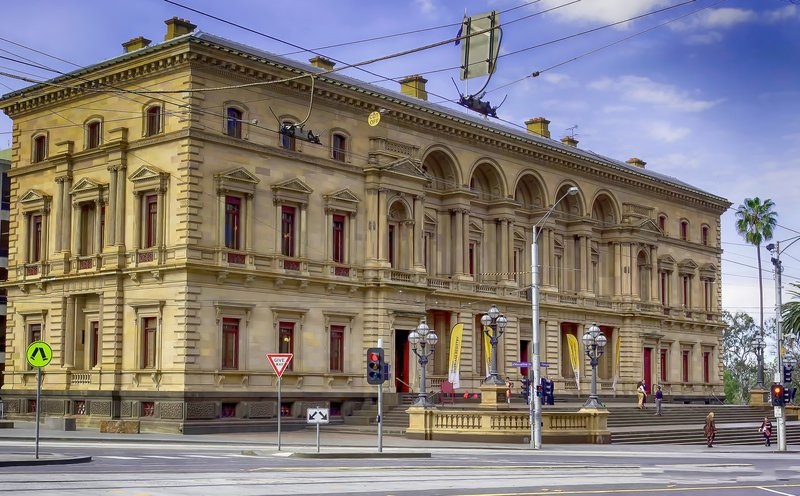
Today, visitors to the Old Treasury Building in Melbourne mostly visit to learn about the city’s fascinating past in a glorious venue.
In 1994, the Old Treasury Building was restored to contain the Old Treasury Building Museum, where visitors can learn more about the Victorian Gold Rush, Melbourne’s early colonial beginnings and crucially about the lives of local First Nations people before Europeans arrived.
The museum plays a vital role in telling the stories of important social histories and the forgotten lives of previous Melburnians. Permanent exhibitions include The Gold Vaults, Growing Up in the Old Treasury, Yarra: Stories of Melbourne’s River, while temporary exhibitions range from Lost Jobs to Women Work for Victory.
The museum is open from 10 am to 4pm every day except Saturdays and best of all, it’s free to enter!
Discover More about Melbourne with CityDays
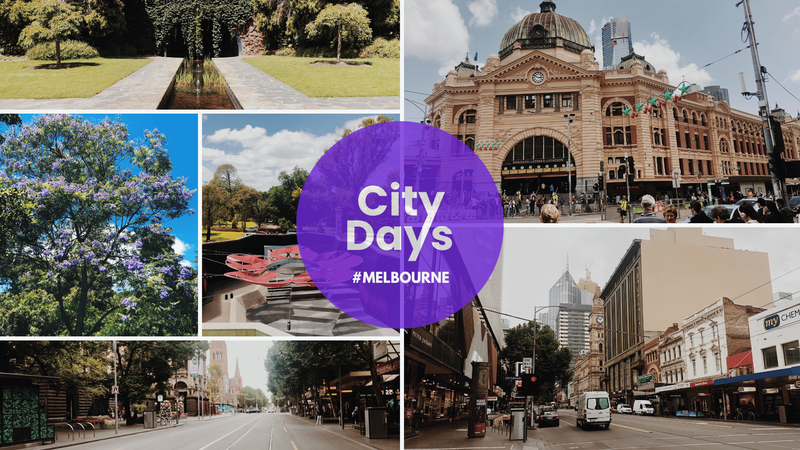
Ready to discover more of what Melbourne has to offer?
CityDays have FOUR treasure and scavenger hunts in Melbourne to choose from, all of which combine the fun of an escape room with the historic facts and whimsical trivia of a walking tour!
For those interested in exploring Melbourne’s Gold Rush history, check out our Frozen Idols, Shifting Walls route.
Take the stress out of planning your visit to Melbourne and book your adventure today!
Not visiting Melbourne this time? Don’t worry, you’ll find us all over the world.
